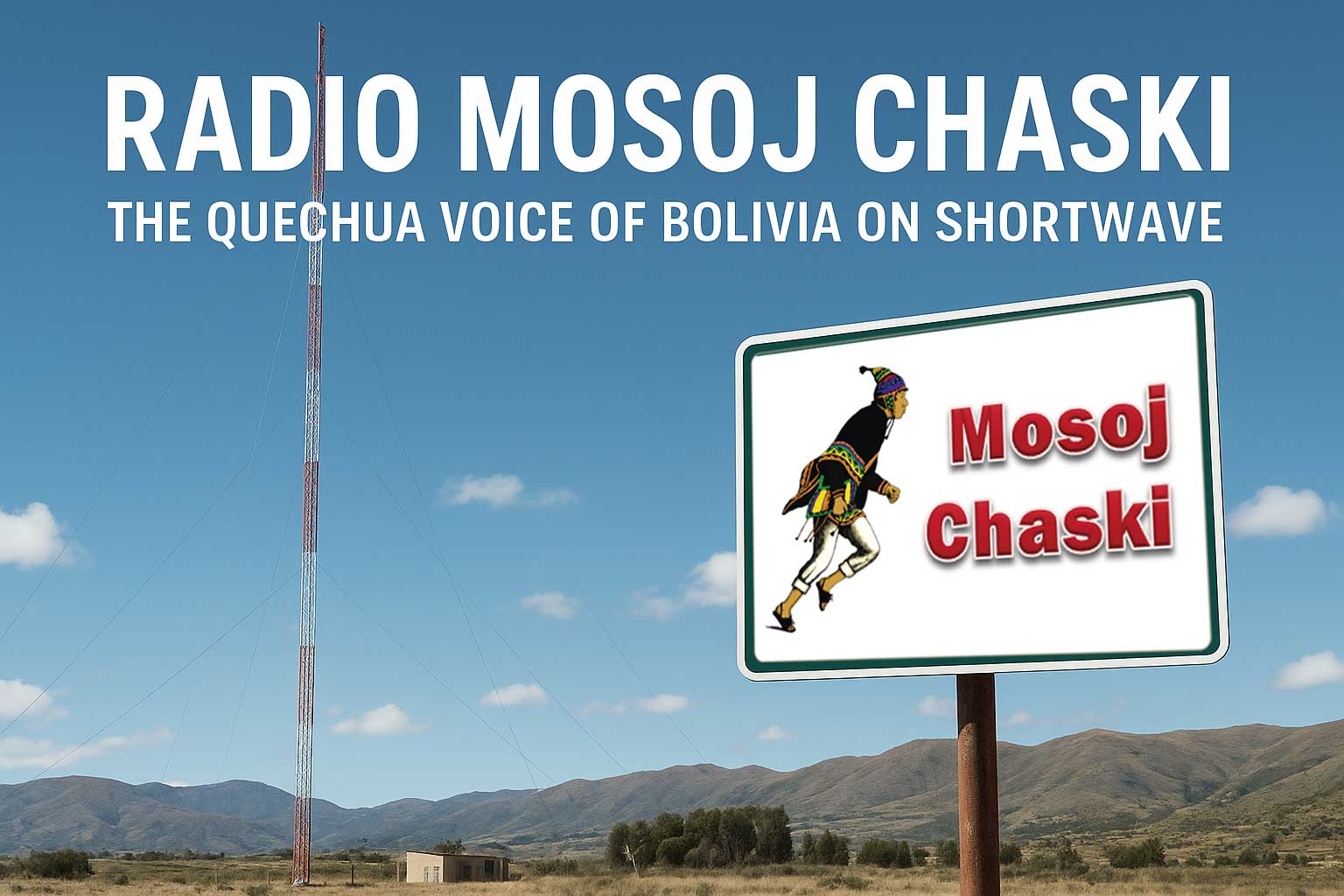Shortwave radio has always been a passport to distant cultures—an invisible bridge across mountains, oceans, and borders. For DXers, nothing compares to the thrill of catching a fragile signal traveling thousands of kilometers. It carries with it the stories, music, and spirit of a faraway land. Among the stations that continue to give shortwave its soul is Radio Mosoj Chaski, a Bolivian broadcaster dedicated to one of the oldest living cultures in the Americas: the Quechua people, descendants of the Incas.
Broadcasting from the heart of the Andes, Radio Mosoj Chaski is more than a radio station. It is a cultural lifeline, an educational platform, and a “new messenger” for millions who continue to speak the language of their ancestors.
A Window to Cochabamba — Bolivia’s Eternal Spring
Radio Mosoj Chaski’s home base is Cochabamba, a vibrant city hugged by valleys and encircled by the Andes. Founded in 1542, Cochabamba has grown into Bolivia’s agricultural heartland and one of its most progressive cities. At 2,550 meters above sea level, it enjoys near-perfect weather—eternal springtime, as locals proudly say.
From this bustling urban center, programs travel by microwave link to the transmitting site in Cotapache, 20 km away, where an 8 kW signal on 3310 kHz cuts through the thin Andean air and races across continents. For DXers from Asia to Europe and beyond, that familiar hum of 3310 kHz has become a cherished nightly catch.
The Mission Behind the Microphone
The roots of Radio Mosoj Chaski stretch back to a missionary movement founded in 1968 in Sucre, Bolivia. The earlier group—Sumaj Chaski (“Good Messenger”)—recorded Quechua-language messages on cassette tapes and occasionally appeared on shortwave through HCJB and local stations. Though Mosoj Chaski is not officially part of that project, it draws heavy inspiration from it, even honoring it in name: “Mosoj Chaski” means “New Messenger.”
But establishing this new message wasn’t easy.
The station spent seven years battling bureaucratic delays simply because they refused to pay bribes—a common obstacle in the 1990s. After finally receiving their license in 1997, it took two more years to build their transmitter, studios, and program library. Then, on April 12, 1999, Radio Mosoj Chaski signed on for the very first time.
Today, the station broadcasts twice daily, offering programming on:
- Community issues
- Cultural preservation
- Health & agriculture
- Quechua literacy
- Music & stories
- Religious and spiritual guidance
For many in remote valleys where Spanish is barely spoken, Mosoj Chaski is not just radio—it is connection, education, and representation.
Why Radio Mosoj Chaski Matters — Preserving Quechua Identity
Quechua is spoken by nearly 10 million people across Bolivia, Peru, and Ecuador. And while Quechua once served as the official language of the mighty Inca Empire, today it struggles for recognition and survival.
Radio Mosoj Chaski is one of the strongest advocates for the language’s preservation.
Their mission focuses on four pillars:
1. Ministry: Cultural and spiritual outreach tailored to Quechua customs and values.
2. Radio: Daily shortwave programming heard around the world.
3. Literacy: Teaching Quechua speakers to read and write in their mother tongue—before transitioning to Spanish.
4. Music: Producing and archiving Quechua-language songs and stories.
Its programming lineup includes beloved shows like Rijch'ariy (Waking Up), Sonqota Tiyaykuchisun (To Rest the Heart), Wawaswan Parlarikuna (Speaking with the Children), and Pakitu, a radio drama encouraging literacy.
A Brief History of Bolivian Radio Broadcasting
Bolivia has a long, colorful, and sometimes tumultuous relationship with radio.
In the 1930s—during both the Chaco War and rising social unrest—radio emerged as a powerful tool connecting isolated mining towns, rural indigenous communities, and revolutionary movements.
By the 1940s and 50s, Bolivia became known for its “miner's radios,” fiercely independent community-run stations that broadcast in Aymara and Quechua. These stations played major roles in labor movements and cultural preservation.
As decades passed, tropical-band stations proliferated across the Andes, giving Bolivia one of the most vibrant shortwave landscapes in South America. Though many have since gone silent, Bolivia remains beloved among DXers for its unique regional voices, and Radio Mosoj Chaski carries that legacy forward—one kilohertz at a time.
Why DXers Love Radio Mosoj Chaski
For shortwave enthusiasts, Mosoj Chaski is often described as “the easiest Bolivian catch.” Its signal travels remarkably well despite the modest power, helped by altitude, favorable propagation paths, and the relative quiet of 3310 kHz.
Listeners worldwide often report:
- Clean audio
- Distinctive Quechua music
- Warm community announcements
- Clear station IDs
The station welcomes QSL requests and reception reports, especially in Spanish or Quechua. Enthusiasts are often rewarded with thoughtful replies from the staff, many of whom learned broadcasting on the job.
Final Thoughts: A Living Echo of Andean Heritage
Radio Mosoj Chaski stands as a testament to what radio still does best: carry identity, culture, and community beyond borders. In an age dominated by streaming and social media, this humble 8 kW shortwave signal continues to preserve a language older than the Spanish conquest and share the rhythms of Quechua life with the world.
For DXers, catching Radio Mosoj Chaski is more than logging a frequency—it’s tuning into the heartbeat of the Andes.

